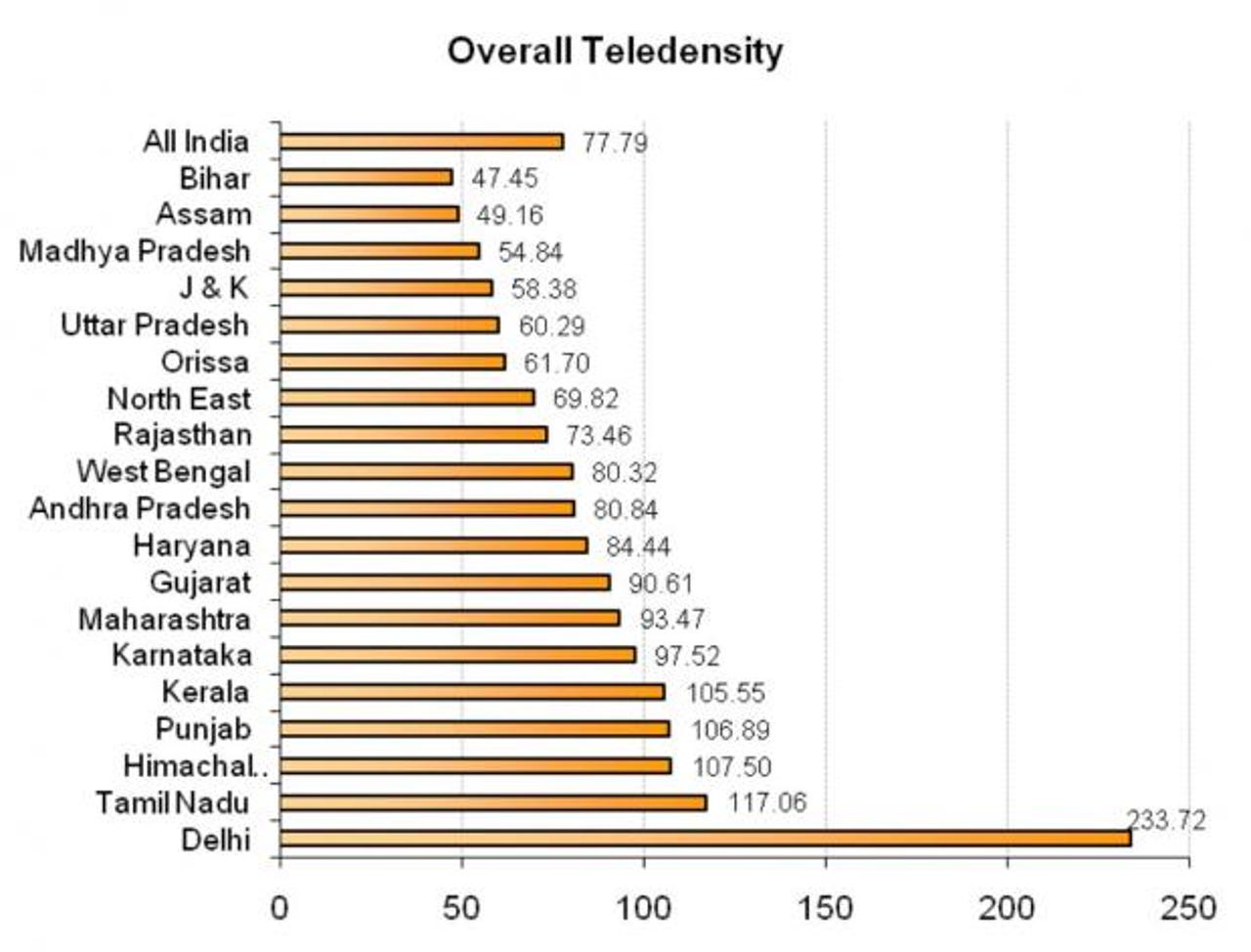India must address disparities in teledensity

In July this year, for the first time in its history, India saw a dip in its overall telecom user base.
According to the data released by the regulator, Telecom Regulatory Authority of India (TRAI), the overall telecom user base dropped by 20.71 million subscribers to 944.81 million, from 965.52 million in June 2012
The primary reason for the dip was due to telecom operators that had to deactivate inactive prepaid subscribers who had not used their mobiles in the last 60 days.
The biggest loss in user base came from Reliance Communications which lost 20.48 million users (out of 20.61 million "lost" subscribers), followed by Tata Teleservices, Uninor, Videocon, Loop and state-run Mahanagar Telephone Nigam Limited (MTNL).
There are many subscribers in India who use their mobile phones only to listen to music and to receive calls (both of which are free in the coumtry).
The average revenue per user (ARPU) has always been a concern for telecom operators in India. What the world sees is the rapidly increasing telecom subscriber base, which is indeed growing at a rather fast pace. For instance, as per TRAI figures, the number of mobile phone subscribers in India was only 98.78 million in March 2006. By July 2012, it grew to 913.49 million, representing a 10-fold increase in six years.
But there are stark disparities in this growth. What remains a concern is the rural market. As per the TRAI numbers, the teledensity in rural areas is only 39.54 percent, as opposed to 157.11 percent in urban areas.
Moreover, there is a great deal of disparity even among the states. States like Bihar, Assam, and Madhya Pradesh are laggards with teledensity of 47.45, 49.16 and 54.84 percent, respectively, which is much below the national average of 77.79 percent. States like Kerala, Punjab, Himachal Tamil Nadu and Delhi have teledensity of over 100 percent.
